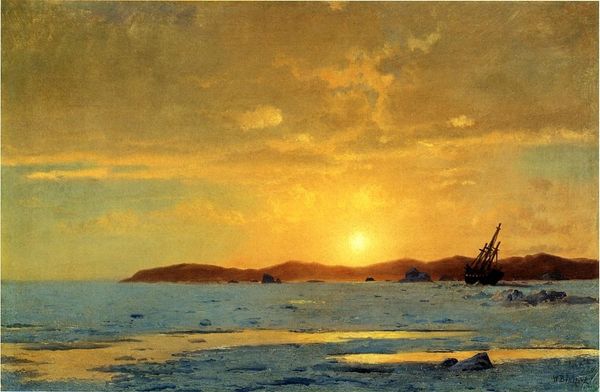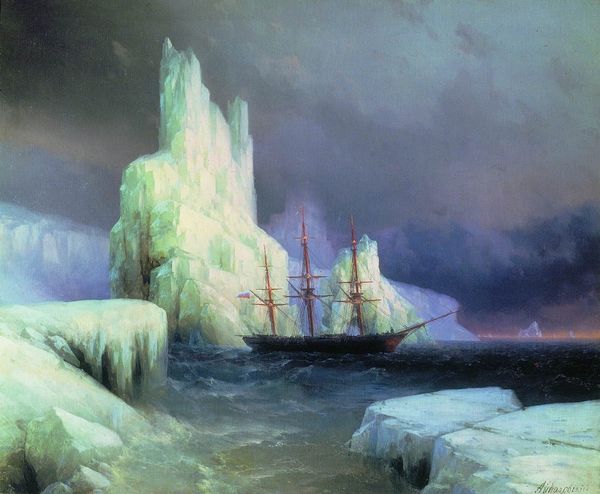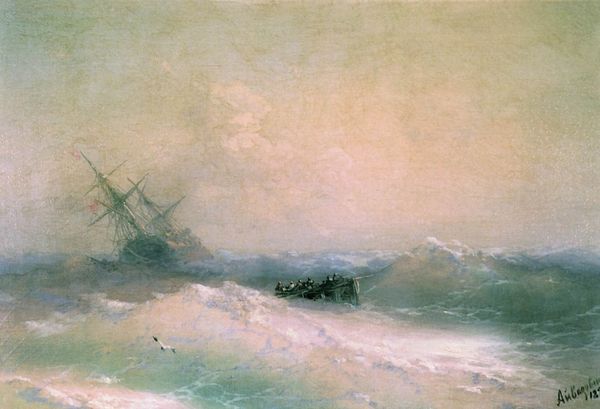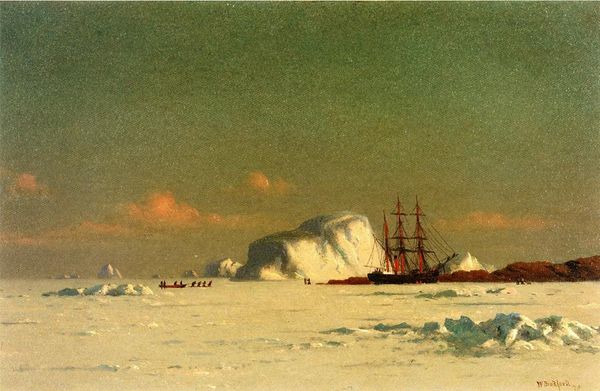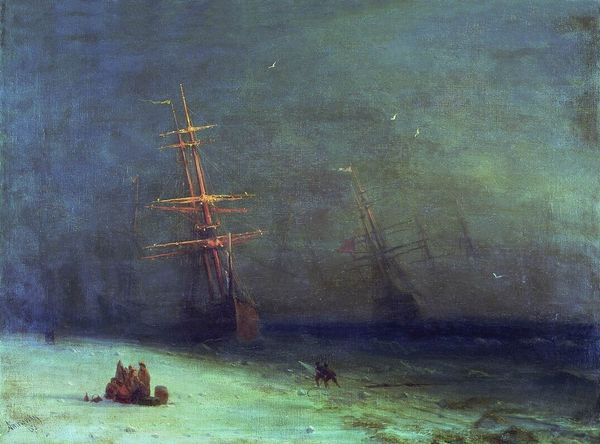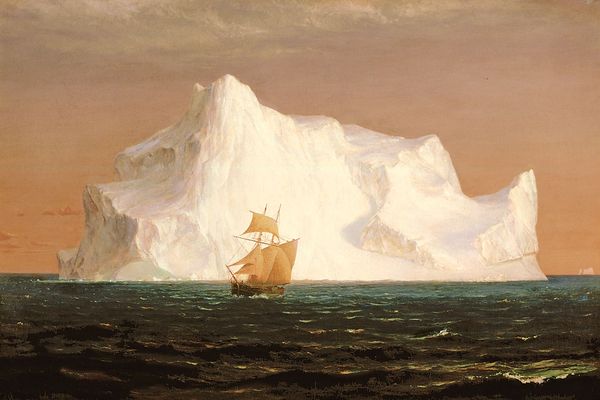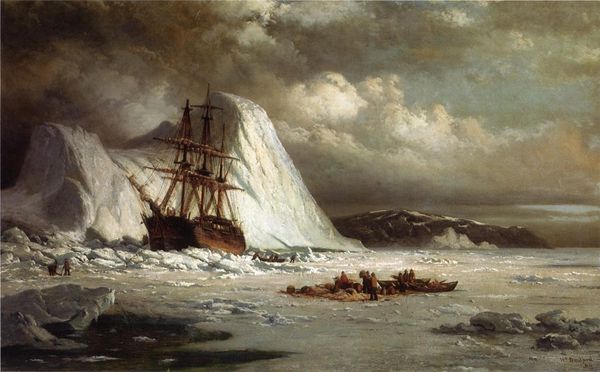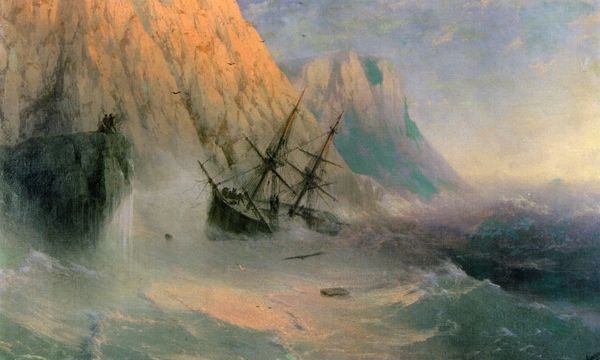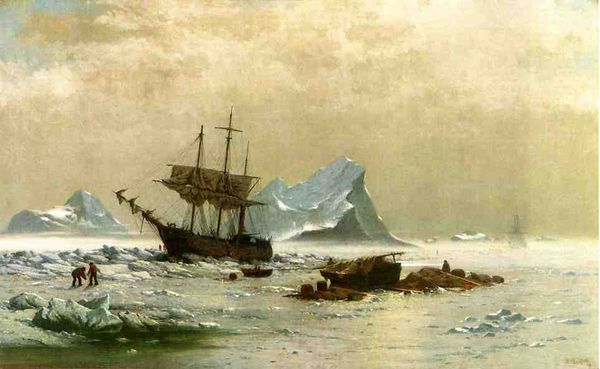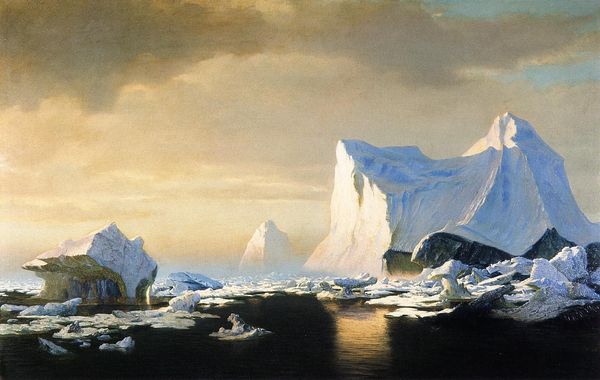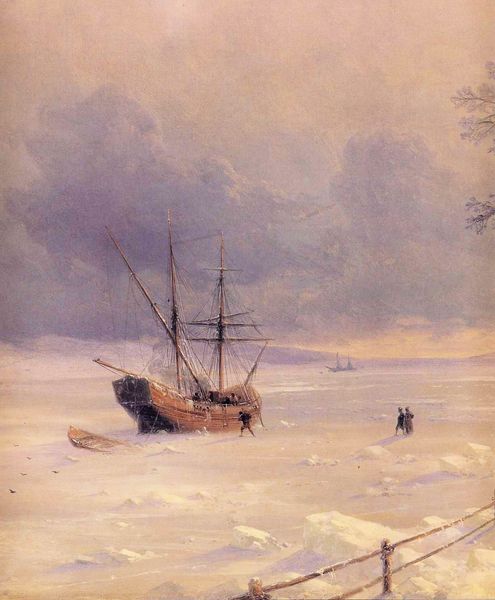
Copyright: Public domain
Curator: William Bradford’s 1879 painting, “Ice Dwellers Watching the Invaders," presents a ship trapped amidst a frozen landscape. Editor: My first thought is how ominous it feels. The light is so dramatic, the ship looks incredibly vulnerable against the scale of the ice. Curator: Indeed. The striking contrast between light and shadow emphasizes the impasto of the oil paint, particularly across the textured surfaces of ice and the sky. Notice how Bradford's mastery evokes the sublime, creating a sense of awe mixed with trepidation. Editor: The sublime, yes, but the title immediately suggests an unsettling narrative beyond just the visual drama. "Ice Dwellers Watching the Invaders" implies an indigenous presence, witnessing a colonial incursion, and all the associated historical and cultural implications. This changes my entire reading. Curator: Absolutely, and it's within this binary where its strength resides. The ship, meticulously rendered, becomes a focal point around which these tensions coalesce. Consider the formal structure, a starkly composed arrangement, a visual language of intrusion against an undisturbed vista. Editor: Thinking of it within the Hudson River School tradition, typically celebrated for its serene landscapes, this painting feels disruptive. It challenges any romantic notion of exploration and manifest destiny, forcing us to consider the perspective of those already there. The way Bradford has painted it, it feels almost like a crime scene photograph waiting to happen. Curator: Your interpretation opens it up in important ways. It suggests Bradford knowingly positions the scene within a power dynamic, playing with the aesthetic to convey deeper colonial critiques. Even if unintentional, these are latent possibilities. Editor: Exactly. Whether intentionally or not, that title casts a critical light. The formal elements certainly support the idea of environmental vulnerability, yes, but also speak volumes about disrupted human narratives and unequal power relationships in these frozen territories. Curator: A fitting final thought, then, underscoring how the elements of composition, light and narrative work together in ways we’re still compelled to discuss over a century later. Editor: Ultimately it’s an urgent reminder: the canvas contains not just a scene, but echoes of our own historical culpability and current political landscapes.
Comments
No comments
Be the first to comment and join the conversation on the ultimate creative platform.

